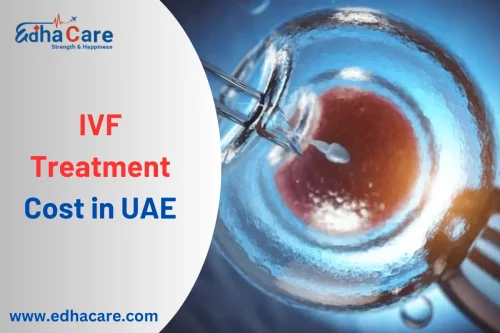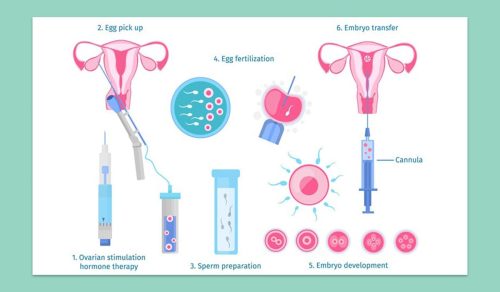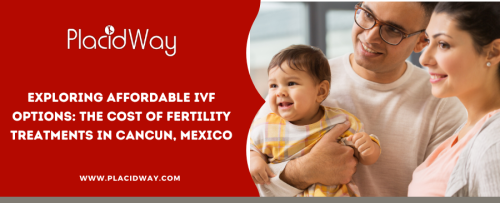How Much Does IVF Cost Without Insurance?
If you’re thinking about in vitro fertilization (IVF) and don’t have insurance to cover it, you’re probably wondering about the price tag. IVF is a life-changing option for many who dream of starting a family, but it’s no secret that it comes with a hefty cost. Without insurance, the numbers can feel overwhelming, and the process might seem out of reach. But don’t worry—I’m here to break it all down for you in a way that’s easy to understand, with real numbers, practical tips, and some fresh insights you won’t find everywhere else. Let’s dive into what IVF costs without insurance, what drives those costs, and how you can make it work for your budget.
What’s the Real Price of IVF Without Insurance?
IVF isn’t cheap, and without insurance, you’re footing the entire bill yourself. On average, a single IVF cycle in the United States costs between $12,000 and $20,000. That’s the baseline price for the core procedure—think monitoring, egg retrieval, fertilization in a lab, and embryo transfer. But here’s the catch: that’s just the starting point. When you add in medications, extra tests, or advanced techniques, the total can climb to $25,000 or even $30,000 per cycle. And since many people need more than one cycle to get pregnant, the costs can stack up fast.
Why such a big range? It depends on where you live, the clinic you choose, and your specific needs. For example, a clinic in a big city like New York or Los Angeles might charge more than one in a smaller town. Plus, if you need donor eggs or a surrogate, you’re looking at a whole different ballgame—sometimes $50,000 or more. The U.S. Department of Health and Human Services backs this up, estimating a single cycle at $15,000 to $20,000, with donor eggs pushing it past $30,000.
But averages only tell part of the story. Let’s unpack what’s really going on behind those numbers.
Breaking Down the Costs: What You’re Actually Paying For
IVF isn’t just one big bill—it’s a bunch of smaller costs that add up. Understanding what you’re paying for can help you plan better and maybe even save a little. Here’s a breakdown of the main pieces:
The Base IVF Package
This is the core of the process, usually $10,000 to $15,000. It covers:
- Monitoring: Ultrasounds and blood tests to track your ovaries and hormones.
- Egg Retrieval: A quick procedure to collect eggs from your ovaries, done under anesthesia.
- Fertilization: Lab work where eggs meet sperm (either naturally or with a boost called ICSI).
- Embryo Transfer: Placing the embryo into your uterus.
Most clinics quote this as their “base fee,” but it rarely includes everything you’ll need.
Medications
Fertility drugs are a big chunk of the cost—anywhere from $3,000 to $6,000 per cycle. These meds stimulate your ovaries to produce more eggs, and the price depends on how much you need and which brands your doctor prescribes. Some people respond well with less, while others need higher doses, driving up the total.
Extra Procedures
Here’s where things get tricky. Depending on your situation, you might need add-ons like:
- ICSI (Intracytoplasmic Sperm Injection): $1,000–$2,000. This is when a single sperm is injected into an egg, often used for male infertility.
- PGT (Preimplantation Genetic Testing): $3,000–$6,000. Tests embryos for genetic issues before transfer.
- Embryo Freezing: $500–$1,000 upfront, plus $300–$600 per year for storage.
These aren’t always necessary, but they’re common, and they can make a big difference in your final bill.
Hidden Costs
Don’t forget the stuff that’s easy to overlook:
- Initial Testing: $500–$2,000 for bloodwork, semen analysis, or ultrasounds before you even start.
- Travel: If your clinic’s far away, gas, flights, or hotel stays add up.
- Time Off Work: Lost wages if you need to miss days for appointments or recovery.
A 2014 study from the University of California found that couples spent an average of $19,234 on their first cycle, with each extra cycle adding about $6,955. That’s a decade-old number, so with inflation, today’s costs are likely higher.
Why Does IVF Cost So Much?
You might be wondering why IVF is so expensive in the first place. It’s not just about greed—there are real reasons behind the price. First, it’s a high-tech process. Clinics need fancy equipment, like incubators and microscopes, plus a team of experts—doctors, embryologists, nurses—all working together. That doesn’t come cheap.
Second, the medications are pricey because they’re specialized. Hormones like FSH (follicle-stimulating hormone) aren’t your average over-the-counter pills; they’re custom-made for fertility and often imported.
Finally, success isn’t guaranteed. The American Society for Reproductive Medicine says the average success rate for a live birth is about 40% for women under 35, dropping as you get older. Clinics charge what they do because many patients need multiple tries, and they’re covering the cost of those who don’t succeed.
How Many Cycles Will You Need?
Here’s a tough truth: one cycle might not be enough. The number of cycles you need depends on your age, health, and luck. For women under 35, there’s a 40–50% chance of success per cycle. Over 40? That drops to 10–20%. On average, people go through 2–3 cycles before a baby arrives, meaning costs could hit $40,000–$60,000 without insurance.
Take Sarah, a 32-year-old from Texas. She spent $18,000 on her first cycle—base fee plus meds—but it didn’t work. Her second try, with genetic testing, cost $22,000. She got pregnant on the third cycle, adding another $15,000. Total: $55,000. Stories like hers show how unpredictable the price can be.
Quick Quiz: How Many Cycles Might You Need?
Answer these questions to get a rough idea:
- Are you under 35? (Yes = 1 point, No = 0)
- Do you have any known fertility issues (like low egg count or sperm problems)? (No = 1 point, Yes = 0)
- Are you generally healthy (no smoking, normal weight)? (Yes = 1 point, No = 0)
- 3 points: You might need 1–2 cycles.
- 1–2 points: Plan for 2–3 cycles.
- 0 points: It could take 3+ cycles.
This isn’t science—just a starting point to set expectations.
Where You Live Changes the Price
Location matters more than you’d think. IVF in California or New York can cost $20,000–$25,000 per cycle, while in states like Tennessee or Ohio, it might be closer to $12,000–$15,000. Why? Big cities have higher rent, staff salaries, and demand, which jacks up prices. Rural clinics might be cheaper but could lack the latest tech.
A 2023 report from FertilityIQ found that the Midwest and South tend to have lower IVF costs—sometimes 20–30% less than coastal areas. If you’re near a state line, crossing over could save you thousands.
Donor Eggs, Sperm, or Surrogacy: The Big Spenders
If your eggs or sperm aren’t viable, or you need a surrogate, costs skyrocket. Here’s what to expect:
- Donor Eggs: $20,000–$30,000 per cycle, including the donor fee ($5,000–$10,000) and extra IVF steps.
- Donor Sperm: $500–$1,500 per vial, plus shipping and storage.
- Surrogacy: $80,000–$150,000 total, covering the surrogate’s compensation, legal fees, and IVF.
These options are game-changers for many, but they turn IVF into a six-figure investment fast.
Can You Lower the Cost?
Paying full price isn’t your only option. There are ways to cut corners without cutting quality. Here are some practical ideas:
Shop Around
Clinics vary wildly in price, even in the same area. Call 3–5 places, ask for their base fee, and see what’s included. Some offer discounts for paying upfront or in cash.
Consider Mini-IVF
Mini-IVF uses fewer drugs, dropping the cost to $5,000–$7,000 per cycle. It’s less intense, so success rates are lower (20–30%), but it’s a budget-friendly start.
Look for Grants
Organizations like BabyQuest or the Starfish Foundation offer grants—sometimes $5,000–$15,000—to help cover IVF. You’ll need to apply and meet their criteria, but it’s free money if you qualify.
Travel for Treatment
IVF abroad can be a steal. In Mexico, a cycle might cost $6,000; in Spain, $8,000. Add travel costs, and it’s still often cheaper than the U.S. Just research the clinic’s reputation first.
Steps to Save on IVF Costs
- Get Quotes: Contact clinics for detailed breakdowns.
- Ask About Packages: Some offer multi-cycle deals (e.g., $25,000 for 3 tries).
- Check Meds: Generic drugs or online pharmacies can shave off $1,000.
- Freeze Early: If you’re young, freeze eggs now ($5,000–$10,000) to avoid pricier IVF later.
The Emotional Cost Nobody Talks About
Money isn’t the only thing you’ll spend. IVF takes a toll on your emotions, too. The waiting, the hoping, the letdowns—it’s a rollercoaster. A 2024 Stanford study found that couples with infertility have higher rates of anxiety and depression, especially when treatments fail. Each cycle that doesn’t work can feel like a $20,000 punch to the gut.
Take time to care for yourself. Join a support group, talk to a friend, or even try a free meditation app. It won’t lower the bill, but it’ll help you stay strong.
What’s New in 2025: Trends That Could Affect Costs
IVF isn’t static—new tech and policies are shaking things up. Here’s what’s happening now that could impact your wallet:
Cheaper Tech on the Horizon
Labs are testing “lab-on-a-chip” systems—tiny devices that could streamline fertilization and cut costs by 20–30%. They’re not widespread yet, but by late 2025, some clinics might offer them, dropping prices to $10,000–$12,000 per cycle.
State Laws Pushing Coverage
As of April 2025, 21 states mandate some fertility coverage, but only 15 include IVF. California’s new law forces insurers to cover it, which might raise premiums for everyone—but if you’re uninsured, it won’t help directly. Watch for more states to follow suit.
X Platform Buzz
Posts on X in early 2025 show people frustrated with IVF’s price tag. One user noted, “$15K–$40K is wild—why hasn’t this gotten cheaper after 60 years?” Another pointed out clinics jacking up fees for genetic screening. It’s clear folks want affordable options, and that pressure might push innovation.
Real Stories: What Others Paid
Numbers are one thing, but stories hit different. Meet a few people who’ve been there:
- Jenna, 29, Ohio: Spent $14,000 on her first cycle, including meds. Got pregnant on try two ($28,000 total). “I wish I’d known about mini-IVF sooner—it might’ve saved me $5,000.”
- Mark & Lisa, 37, California: Used donor eggs after three failed cycles. Total cost: $45,000. “We had to remortgage our house, but our son’s worth it.”
- Tina, 41, Florida: Went to Mexico for IVF at $7,000 per cycle. Took two tries ($14,000 total). “The savings were huge, but the travel was stressful.”
These folks show there’s no one-size-fits-all price—or path.
Your IVF Budget Planner
Ready to crunch some numbers? Here’s a simple tool to estimate your costs. Grab a pen and fill this out:
Interactive Budget Checklist
✔️ Base Fee: Call your clinic—what’s their starting price? Write it down: $____
✔️ Meds: Ask your doctor for a rough estimate: $____
✔️ Extras: Need ICSI, PGT, or freezing? Add $____
✔️ Cycles: Guess how many tries (use the quiz above): ____ x Total = $____
✔️ Travel/Other: Any hidden costs? $____
Grand Total: $____
This isn’t exact, but it’ll give you a ballpark to work with.
Financing IVF: Loans, Savings, and More
No insurance? You’ve still got options to pay for it:
- Personal Loans: Banks or platforms like Future Family offer IVF loans with rates from 5–15%. Monthly payments could be $300–$500 for a $20,000 loan.
- Savings: Dip into your nest egg if you’ve got one. Just don’t drain it all—keep an emergency fund.
- Crowdfunding: Sites like GoFundMe let friends and family chip in. One couple raised $10,000 this way.
- Clinic Plans: Some offer payment plans or refunds if you don’t get pregnant after a set number of cycles.
Mix and match these to fit your life. For example, Jenna used savings for her first cycle and a loan for the second.
The Success Rate Myth: Paying More Doesn’t Always Win
Here’s a shocker: pricier clinics don’t always mean better odds. A 2023 study in Reproductive Biology and Endocrinology found that clinics charging $20,000+ had similar success rates (35–45%) to those at $12,000. What matters more? The doctor’s experience and your personal health. So don’t assume a fancy office equals a baby—check their stats on the CDC’s ART database.
IVF Abroad: A Hidden Gem?
Traveling for IVF is growing in 2025. Countries like Spain, Greece, and Mexico offer cycles for $6,000–$10,000, often with high success rates. A friend of mine, Alex, went to Prague. His cycle cost $8,000, including flights and a hotel, versus $22,000 at home in Seattle. He’s now dad to twins. The catch? You need a solid clinic and a passport. Research success rates and reviews—don’t just chase the cheapest deal.
Pros and Cons of IVF Abroad
| Pros | Cons |
|---|---|
| Saves 50% or more | Travel stress |
| Top-notch clinics | Language barriers |
| Vacation bonus | Harder follow-up care |
The Future of IVF Costs: What’s Coming?
Looking ahead, costs might shift. That lab-on-a-chip tech could hit mainstream by 2026, trimming $3,000–$5,000 off each cycle. Plus, if more states mandate coverage, competition might force prices down even for the uninsured. A 2024 Frontiers in Global Women’s Health study predicts that by 2030, IVF could drop to $10,000 per cycle if tech keeps advancing. Fingers crossed!
Your Next Steps: Making IVF Happen
Feeling ready to tackle this? Here’s how to start:
- Research Clinics: Find 3 near you (or abroad) and compare prices and success rates.
- Talk to Your Doctor: Get a personalized cost estimate based on your health.
- Build a Plan: Use the budget checklist and explore financing.
- Ask for Help: Look into grants or tell your family you’re fundraising.
IVF without insurance is a big leap, but it’s not impossible. With some planning and grit, you can make it work.
Poll: What’s Your Biggest IVF Worry?
- A) The cost
- B) The emotional toll
- C) Finding the right clinic
- D) Something else (tell us below!)
Drop your answer in the comments—I’d love to hear from you.
Final Thoughts: It’s More Than Money
IVF’s price tag is steep—$15,000 to $30,000 per cycle, maybe $60,000 total without insurance. But it’s not just about dollars. It’s about hope, family, and what you’re willing to fight for. Whether you save, borrow, or travel, there’s a way to make it yours. You’ve got this—and you’re not alone on the journey.




